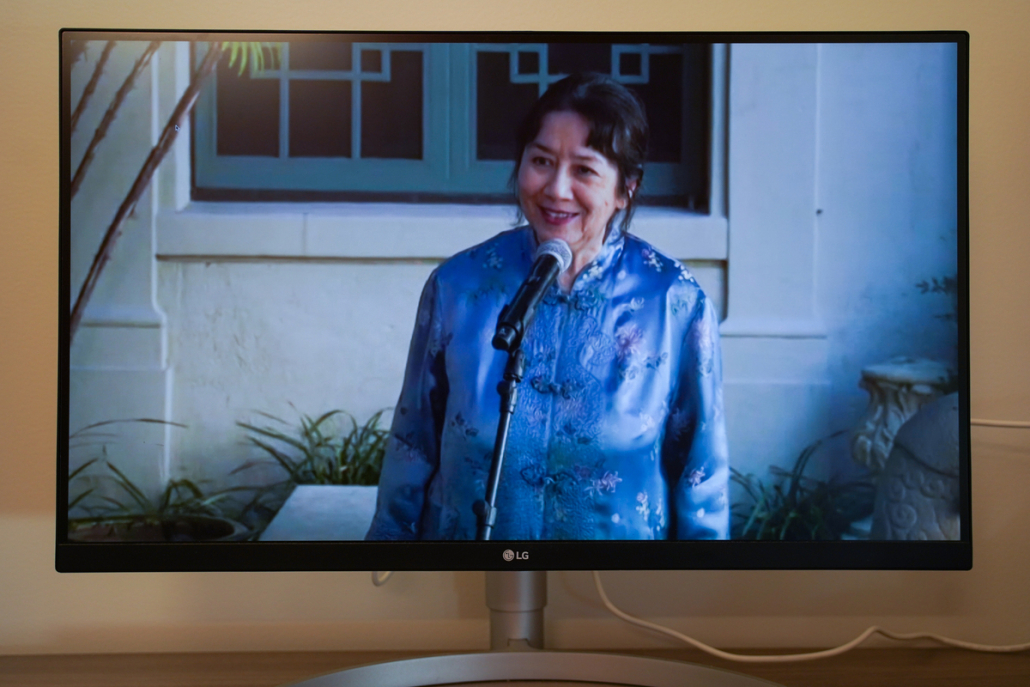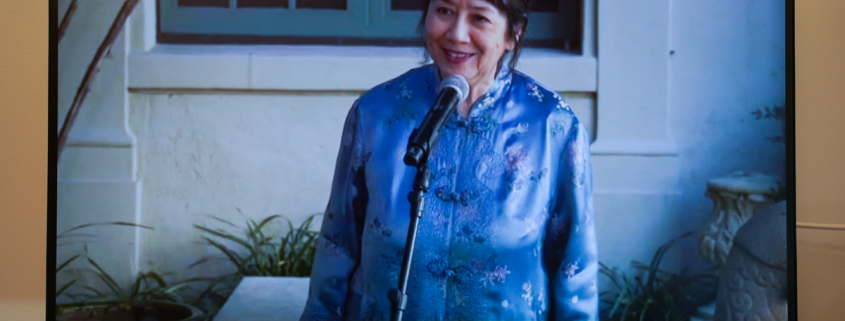Lunar New Year celebration highlights art, storytelling

Paper lanterns, lion dances and festive music and cultural dances rang in the Lunar New Year — the Year of the Tiger — at the USC Pacific Asia Museum’s Lunar New Year Festival. The museum hosted the virtual festival Saturday, showcasing various performances of music, dance, martial arts demonstrations and storytelling.
“This is the Year of the Tiger, where there’s ferocity, bravery, strength and courage associated with this year … Let’s go strong into the year without being paralyzed by anything negative to keep you down,” said Bobo Chang, an actor, fitness content creator and host of the festival, in an interview with the Daily Trojan.
The Korean Classical Music and Dance Company kicked the event off with the hwa kwan moo, or flower crown dance. Led by company director Don Kim, the dance is usually performed for the royal family. The dancers also performed the chang-go chum, or hourglass drum dance, an acrobatic folk dance, as well as the gayageum, a 12-stringed instrument and the buchae-chum — fan dance — a dance meant to value the joy of life and happiness.
Kim also gave a short Korean lesson on how to say the greeting, annyeonghaseyo, which could mean good morning, good evening, good afternoon or hello. Attendees also learned to say gamsahamnida, which means thank you, and saehae bok mani badeusipsio to wish others a happy new year.
Following the dance and language lesson, the USC Kazan Taiko, a Japanese drumming ensemble performed. The ensemble derives its name from the Japanese word for volcano, which Chang said is an “explosive force that inspires them and characterizes their playing style.”
“Kazan’s goal is to provide a place for their members to express themselves through rhythm and movement, while learning and participating in the tradition of Japanese taiko drumming,” Chang said.
Kazan Taiko played two songs: “Matsuri,” which means festival in Japanese, and “Rising Dragon Fist,” which was written by former members of the ensemble. Artistic director Zoe Beyler, a junior majoring in percussion performance, said the group has a “strong culture of writing [their] own pieces.”
“I was really excited and happy with how the performance went,” Beyler said. “I was really excited for all the new members to get to perform for the first time, and I really liked getting to perform [at the museum] because it was really pretty and it is an interesting place.”
After their performance, Chang shared anecdotes of his personal favorite Lunar New Year traditions, such as eating tteokguk, a rice cake soup. In Korea, eating the soup signifies adding a year to your age and, as a child, Chang said he enjoyed eating several bowls and declaring himself to be “50 at eight years old.”
The next performance was by the Northern Shaolin Kung Fu Association, whose mission is to promote and preserve Chinese culture and heritage. The group specializes in Chinese lion and dragon dancing, and also showcases dynamic martial arts demonstrations.
Barbara Wong, who served as resident storyteller for the Honolulu Zoo and developed culinary and walking tours of Honolulu’s Chinatown, shared legends from various Asian cultures. She started off with the story of Songtsan Gambo and Princess Wenchang, told the story of the Cowherd and the Weaver Girl and concluded with the Vietnamese legend of how the moon became ivory.
To close off the festival, Clazzical Notes artists Yihan Chen on the pipa — the Chinese lute — and Haowei Cheng on the gu zheng — the Chinese harp — gave a musical performance.
“Overall, it was beautiful and [there were] a lot of very talented performers,” Chang said. “You could really feel the art and the emotion and the celebration of the New Year … Being able to be up close like that is more intimate, and you’re able to get even a deeper connection with the art.”

